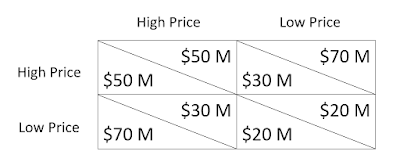Evaluate the effectiveness of fiscal policy. [15 marks]
Fiscal policy is a demand side policy that is implemented by the government. There are two types of fiscal policy - Discretionary fiscal policy and automatic fiscal policy. Discretionary fiscal policy allows the government to manipulate the economy by implementing contractionary or expansionary fiscal policy with the help of instruments such as government spending, 'G', and tax rates, 'T'. On the other hand automatic fiscal policy utilizes progressive taxation and unemployment benefits as a tool to stabilize the economy.
Automatic fiscal policies operate independently without much need for government intervention, therefore, it allows the government to focus on other issues. Progressive tax increases and reduces government revenue proportionately more than rise or fall in income. This leads to less unrest in aggregate demand therefore there is greater price stability. Similarly, unemployment benefits increases with rise in unemployment levels and vice versa. This supports in reducing the amplitude of economic fluctuations, thus improving consumer confidence and investment therefore leading to economic growth.
Coming back to discretionary fiscal policy, the instruments used allow targeting specific markets according to the situation. For example, the government could subsidize merit goods specifically to prevent it from being under consumed.
Fiscal Policies are extremely helpful during deep recessions too as it can easily boost aggregate demand through expansionary fiscal policy. Lastly, even in healthy economies, expansionary fiscal policies targeted towards increasing human capital and research and development, increases allocative and productive efficiency.
However, fiscal policy has several setbacks too. Firstly, fiscal policies suffer from time lags for the effects of the implementation to be observed. This may occur due to high levels of bureaucracy or complex rules and regulations.
Many a times, fiscal policy may be backed up with political incentives. For example, when in need of contractionary fiscal policy due to high inflation rate, the government may choose not to take any effective action due to fear of losing support. This could harm the country's economy.
Thirdly, reducing tax rates may not always lead to rise in aggregate demand. If the consumer confidence is low, people might save more than spending their after-tax income, causing the opposite of rise in aggregate demand. High tax levels can also discourage people from working at all, this would reduce productivity and income levels, leading to a fall in GDP.
During periods of cost push inflation, when stagflation occurs, changing the aggregate demand isn't really effective, as supply side policies are required, therefore fiscal policy is useless in such conditions.
Lastly, expansionary fiscal policy may not always be effective due to the crowding out effect. When government expenditure is increased, more money is borrowed leading to increase in interest rates. This reduces borrowing for investment or consumption, leading to a fall in aggregate demand. The following Keynesian diagram represents how the intended effects of the policy are dampened by the crowding out effect.
Automatic fiscal policies operate independently without much need for government intervention, therefore, it allows the government to focus on other issues. Progressive tax increases and reduces government revenue proportionately more than rise or fall in income. This leads to less unrest in aggregate demand therefore there is greater price stability. Similarly, unemployment benefits increases with rise in unemployment levels and vice versa. This supports in reducing the amplitude of economic fluctuations, thus improving consumer confidence and investment therefore leading to economic growth.
Coming back to discretionary fiscal policy, the instruments used allow targeting specific markets according to the situation. For example, the government could subsidize merit goods specifically to prevent it from being under consumed.
Fiscal Policies are extremely helpful during deep recessions too as it can easily boost aggregate demand through expansionary fiscal policy. Lastly, even in healthy economies, expansionary fiscal policies targeted towards increasing human capital and research and development, increases allocative and productive efficiency.
However, fiscal policy has several setbacks too. Firstly, fiscal policies suffer from time lags for the effects of the implementation to be observed. This may occur due to high levels of bureaucracy or complex rules and regulations.
Many a times, fiscal policy may be backed up with political incentives. For example, when in need of contractionary fiscal policy due to high inflation rate, the government may choose not to take any effective action due to fear of losing support. This could harm the country's economy.
Thirdly, reducing tax rates may not always lead to rise in aggregate demand. If the consumer confidence is low, people might save more than spending their after-tax income, causing the opposite of rise in aggregate demand. High tax levels can also discourage people from working at all, this would reduce productivity and income levels, leading to a fall in GDP.
During periods of cost push inflation, when stagflation occurs, changing the aggregate demand isn't really effective, as supply side policies are required, therefore fiscal policy is useless in such conditions.
Lastly, expansionary fiscal policy may not always be effective due to the crowding out effect. When government expenditure is increased, more money is borrowed leading to increase in interest rates. This reduces borrowing for investment or consumption, leading to a fall in aggregate demand. The following Keynesian diagram represents how the intended effects of the policy are dampened by the crowding out effect.
As shown above, increase in 'G' shifts AD1 to AD2 but
due to high interest rates ‘C’ and ‘I’ fall, shifting AD2 back to AD3.
This makes expansionary fiscal policy less effective.
Here is a mind map of all the points covered in the above answer.




👍🔥🔥
ReplyDeleteJay.....a wonderful start.The mindmap made by you will help people understand the basics easily.
ReplyDelete